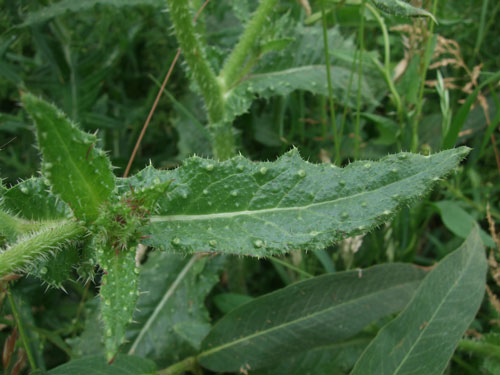Helminthotheca echioides, commonly known as bristly oxtongue, is a biennial herb native to Europe and North America. It may grow up to 90 centimeters tall, with a thick stem and spreading branches. The leaves are often green and 10 to 20 centimeters long. The leaves and stem are all covered with bristles. They are like hair or feathers either on plants and animals.
Bristly oxtongue is an erect, straight, and tall plant that grows both in winter and summer. It can grow in rough, dry weather and withstand cold weather conditions. It has pure green broad leaves, a yellowish flower on top, and thick stems with long bristles on its surface. They can grow in crop fields, orchards, vineyards, gardens, and landscapes. The mature plant carries bright yellow flowers that bloom from May till October. The yellowish flowers have toothed shape tips.
What is bristly oxtongue?
Bristly oxtongue is a biennial herb, is a flowering plant that takes two years to complete its biological life. It has free branches with thick stems, broad brittle leaves, and yellowish flowers. These features make it visible even at a long distance. Bristly oxtongue is tall and erect about 90 centimeters above the ground, making it visible from far. Its leaves have wide-spaced sharp teeth near the edges. The flower is dark yellow with teethed tips and looks attractive to the birds. Although it has a bristled surface, at the same time, it is a high source of food for the birds. It is not poisonous or harmful because it was first used as a medicine for treating worms. The British Isles is broadly distributed in the South and East but more randomly in the North and West.
Bristly Oxtongue Uses
Helminthotheca echioides are commonly known as bristly oxtongue. It is a native herb and is found in Europe and North America. It grows in rough, dry weather as well as in winter. It needs proper watering and sunlight to grow fully but withstand cold, dry weather. Many weeds like bristly oxtongue have some benefits for both humans and birds. Although bristly oxtongue has bristles on it, this plant is edible. It has unevenly spaced teeth along the edges of the leaves.
The plant stalk is also edible because it has a refreshing and bracing flavor. The stalks are edible, but they need to peel first. In past years, bristly oxtongue was used in medicines for treating worms. Like many other flowering plants, bristly oxtongue also provides food like nectar for butterflies and other birds. It is a welcome source of nourishment for flying creatures like birds of all kinds.
Is Bristly Oxtongue Poisonous?
Bristly Oxtongue is a herbaceous weed and is found in dry and distributed areas. The plant’s leaves and even stalk are edible. It has a refreshing and reviving flavor. In past years, the plant was used as a medicine to treat worms. They are not poisonous, although it provides food to many flying birds. As it has yellowish flowers and broad green leaves, it attracts birds f. They could be harmful because it has sharp bristles on it which may harm birds and even humans. The plant is not poisonous as it is one of the primary sources of nourishment for birds.
Bristle Oxtongue Control
Bristly oxtongue is an annual weed or a biennial weed. It grows in winter as well as in warm, dry weather. It can grow in wide ranges of soil types and withstand even in rough, dry weather conditions. Its weed spreads through seeds, which can disperse long distances by wind and birds. Many weeds and crops have rapid growth and need to be controlled for humanity’s healthy environment and lifestyle. Its rapid growth can also be controlled using a selective weed killer containing a mixture of 2, 4-D, dicamba, and Mecoprop-p. By repeating this process will control its rapid and fast growth.
Bristly Oxtongue Leaves
Bristly oxtongue is a tall plant that grows up to 90 centimeters above the ground. It has broad leaves, which are unevenly spaced teeth along the edges of leaves. The leaves can be long and narrow with oblong shapes. It also has swollen pimples, which are rough and brittle to touch. It has a refreshing bitter taste, so their leaves are edible. Not only this, but its stalk is also edible when adequately peeled. In early times, Bristly oxtongue was used as a herb in medicine. The plant is also a source of food and nourishment for many birds.



